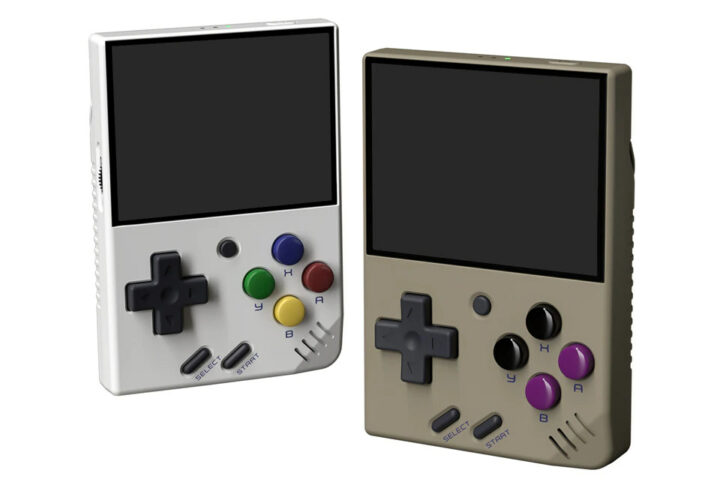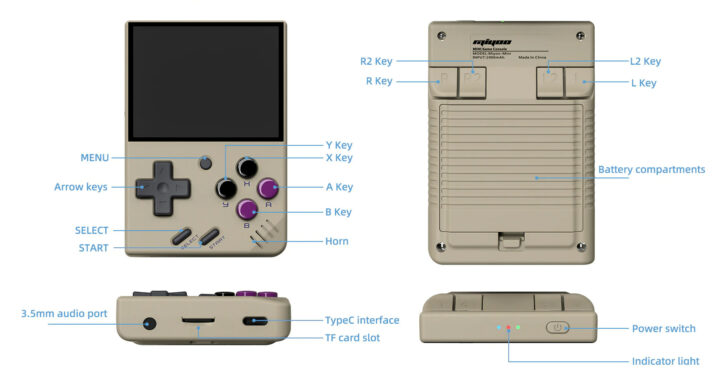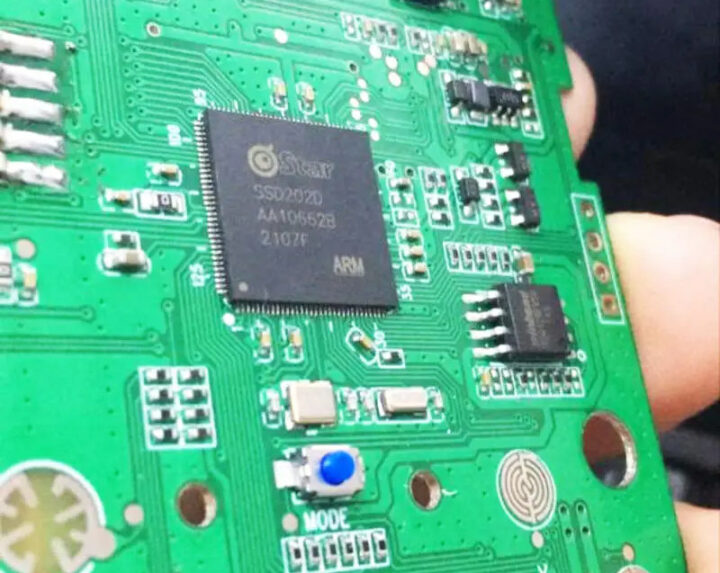SigmaStar SSD202D “Smart Display” dual-core Cortex-A7 processor has found its way into the MIYOO mini portable game console compatible with RetroArch Linux distribution.
Initially designed for industrial smart displays or other HMI applications, we’ve already seen the low-cost Arm Linux processor with 64MB (SSD201) or 128MB (SSD202D) memory has been integrated into a gateway, a single board computer, and M5Stack UnitV2 AI camera devkit, but somehow, it’s now gone into a consumer device.
 MIYOO mini portable game console specifications:
MIYOO mini portable game console specifications:
- SoC – SigmaStar SSD202D dual-core Cortex-A7 processor @ 1.2 GHz with 2D GPU, 128MB DDR3 (Note: no GPU)
- Storage – 32GB MicroSD card
- Display – 2.8-inch IPS screen with 640×480 resolution
- Audio – 3.5mm audio jack
- User input – D-PAD, Menu, Select and Start buttons, ABXY buttons, R/R2 and L/L2 buttons at the back
- USB – 1x USB-C port
- Misc – Power button, Vibration motor, LEDs
- Battery – 3.7V/1,900mAh battery good for 4 to 5 hours of gameplay
- Power Supply – 5V/1A via USB-C port
- Dimensions – 93.5 x 65 x 18mm
- Weight – 110 grams
 The game console ships with a 32GB MicroSD card (likely preloaded with RetroArch), a USB Type-C data cable, a card reader, and a user manual. The seller says it can emulate PS1, CPS1, CPS2, CPS3, FBA, GBA, GBC, GB, SFC, FC, MD, SMS, GG, MEOGEO, PCE, WSC…
The game console ships with a 32GB MicroSD card (likely preloaded with RetroArch), a USB Type-C data cable, a card reader, and a user manual. The seller says it can emulate PS1, CPS1, CPS2, CPS3, FBA, GBA, GBC, GB, SFC, FC, MD, SMS, GG, MEOGEO, PCE, WSC…
The specifications did not mention the processor at all, but I learned about the console via Linux_chenxing Twitter account, and the presence of the SigmaStar SSD202D processor was confirmed by an internal photo taken by Obscure Handhelds which also shows a 4-pin header that should be the UART port for the serial console.
SigmaStar SSD2xx processors have been getting mainline Linux support step-by-step thanks to the Linux Chenxing community (probably meaning dgp by himself, which I’m sure will comment here), so it could be an interesting platform to play with. There’s a thread on Github too. I could not find any official RetroArch support for SSD202D, but while searching I also noticed one Hardkernel’s engineer looked into the processor, not for an “ODROID-GO Lite” console, but an unrelated personal project.
Miyoo Mini portable game console can be purchased on Aliexpress for $50 including shipping, excluding taxes.

Jean-Luc started CNX Software in 2010 as a part-time endeavor, before quitting his job as a software engineering manager, and starting to write daily news, and reviews full time later in 2011.
Support CNX Software! Donate via cryptocurrencies, become a Patron on Patreon, or purchase goods on Amazon or Aliexpress





